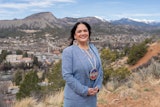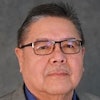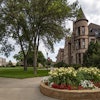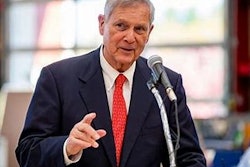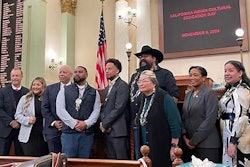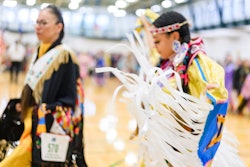Alexandria, Va.
While many have doubted the ability of American Indian students to thrive in the areas of science, technology, engineering and mathematics, Dr. Herb Schroeder is converting skeptics with his Alaska Native Science and Engineering Program.
“The attitude is you can’t get native kids to do engineering,” said Schroeder, the associate dean of undergraduate studies at the University of Alaska at Anchorage.
“I confronted so much racism from the administration,” Schroeder said about the program he launched in the early 1990s. “I was a new professor and my dean told me, ‘we are not going to dumb our program down just to get more native around here.’”
Since that conversation, Schroeder has expanded his program from the Anchorage campus to other colleges and universities. He recruited more than 350 native students majoring in engineering to both the University of Alaska’s Fairbanks and Anchorage campuses as well as Alaska’s Kuskokwim Community College, the University of Washington, the University of Hawaii Manoa and Kapiolani Community College. Roughly 200 more indigenous students are studying biology at these schools.
More than 70 percent of students who participated in Schroeder’s programs graduated with science or engineering degrees, he said.
In the 10 years before Schroeder’s program, the University of Alaska at Anchorage’s engineering program graduated three students. Today, the program recruits about eight students per year, he says. “I just wanted to see a native engineer.”
Schroeder recently presented his program at a symposium hosted by the National Science Foundation’s Committee on Equal Opportunities in Science and Engineering (CEOSE) as a model of success for others working to strengthen the pipeline for American Indians in the sciences and mathematics.
Dr. David Burgess, a professor of biology at Boston University and a former member of CEOSE, reported that American Indians had conferred less than one percent of bachelor’s, master’s and doctoral degrees awarded in the biological sciences in 2005, according to National Science Foundation data.
The value and richness of science and discovery is unequivocally enhanced when diverse demographics are involved in the process, said Dr. Kathie Olsen, deputy director of the NSF during this week’s symposium, held in Arlington, Va.
Data show that introducing underrepresented minority students at an early age increases success rates in high school and the likelihood that students will pursue a career in the sciences and mathematics. Creating entry points where native students can engage in these subjects is key, said Dr. Holly Pellerin, Program Director for the gidakiimanaaniwigamig (Our Earth Lodge) Native American Youth Science Enrichment Program in Minnesota.
In terms of increasing the number of native participants in the sciences and mathematics, Pellerin recommends developing more networks between tribal colleges, universities and Indian education programs, more teacher workshops in local communities, and more long-term funding.
“Out of 16,000 participants in Intel International Science Fair from the past 12 years, only 54 or .008 percent were native,” said Pellerin, who hosts quarterly science camps for children residing on the Fond du Lac reservation where she lives.
“My kids are just as smart as other kids,” she said.
Email the editor: [email protected]
Click here to post and read comments
© Copyright 2005 by DiverseEducation.com
